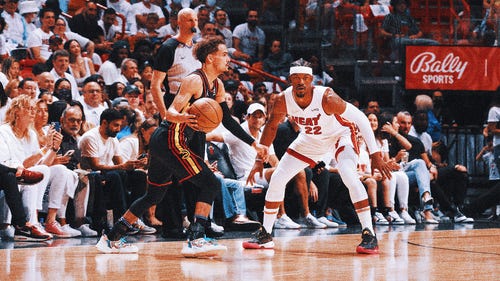
Iowa town remembers 'The Lucky Lakers'
The first two cars the Minneapolis Lakers saw after landing in a snowy Iowa cornfield were a hearse and an ambulance. People dashed through a blinding blizzard, hoping to help and prepared for the worst.
It was early in the morning on Jan. 18, 1960, and the Lakers' DC-3 airplane had just come down near the small western Iowa town of Carroll after a desperate search for a landing spot. The rumbling of the plane had awakened residents.
``They really thought they were gonna need the hearse,'' said former Lakers guard Dick Garmaker, who was on the plane. ``I did, too.''
Nearly a year after rockers Buddy Holly, Ritchie Valens and J.P. Richardson, known as the Big Bopper, died in a plane crash in northern Iowa, the Lakers nearly suffered a similar fate about 150 miles away.
But ``The Lucky Lakers,'' as Garmaker called them, survived their ill-fated trip from St. Louis to Minneapolis unscathed, though more than a bit shaken up.
On Monday, the Iowa town of about 10,000 will remember what's been called a miracle landing with a reception and unveiling of a historical marker dedicated to that night 50 years ago.
After a game against the Hawks, the Lakers took off from St. Louis in bad weather for the trip home to Minnesota. The team, led that year by a second-year star named Elgin Baylor and assists leader Hot Rod Hundley, had just lost its fourth straight game.
According to co-pilot Harold Gifford, now 86, both of the plane's generators failed soon after takeoff, knocking out the lights, radio and power inside the plane.
Gifford and pilot Vern Ullman, now deceased, flew the plane above the clouds and guided themselves by the North Star. The pilots thought they'd be fine as long as they stayed above the clouds, but ``the soup,'' as Gifford called it, kept rising.
The pilots decided to descend low enough so that they'd be dealing with snow instead of more dangerous ice in the clouds. They wound up near Carroll, about 70 miles northwest of Des Moines.
The plane circled the town several times - narrowly missing a grove of trees at one point - as the pilots looked for the airport. The windshield became iced over, so Gifford and Ullman took turns sticking their heads out of the window to see where they were.
``It was horrible!'' Tom Hawkins, then a Lakers rookie, told the New York Post last year. ``The cold and the fear and the lack of oxygen triggered uncontrollable twitching and constriction in the throat. Yet, amazingly, nobody panicked.''
Baylor told the Post that at one point he got up and positioned himself on the floor in the rear of the plane, hooking his arms and legs around seat bottoms.
``I'd read the back was the safest place to be,'' he explained. ``By then my fear of dying was gone. If I was going to go, then let it be.''
Gifford could see little more than the last two L's on Carroll's water tower and the words ``Seniors '59.''
But it was rather bright, Gifford said. He learned later the residents had turned on every light in town to it as bright as possible for the struggling plane.
``When I first saw that town lighted up, I thought, 'Boy, this is great. There are people down there living, which is what I want to keep doing to,''' Gifford said. ``It was a very exciting experience.''
With fuel running low, the pilots decided to land in the cornfield. The plane's 23 passengers fell silent when the DC-3 hit the snowy ground at around 1:30 a.m. - for a moment.
``When we realized we were safe we erupted in cheers,'' Hundley told the Post. ``We jumped out the back and were like little kids. We threw snowballs at each other and the pilots.''
One of the first people the Lakers saw was the local undertaker. ``I'm not shucking you,'' Hawkins told the Post. ``The guy remarked, 'Thought I had some business tonight, boys.'''
Residents drove the unharmed passengers to a nearby hotel, and the next day the team boarded a bus and drove back to Minneapolis. The plane was soon repaired, and a bulldozer was used to plow a makeshift runway so the plane could complete its journey.
``It was really a heroic deal. It was a miracle what these guys performed that night. Quite unbelievable,'' Garmaker said.
Months after the emergency landing, the team moved from Minneapolis to Los Angeles.
John Steffes, a self-described history buff, spearheaded the commemoration after learning that distant relatives owned the farm where the plane landed. The cornfield is now a subdivision, so the city will place the historical marker in a nearby park.
``If we would have gotten on the ball a couple of years earlier we probably could have named the park Laker Park,'' he said.







